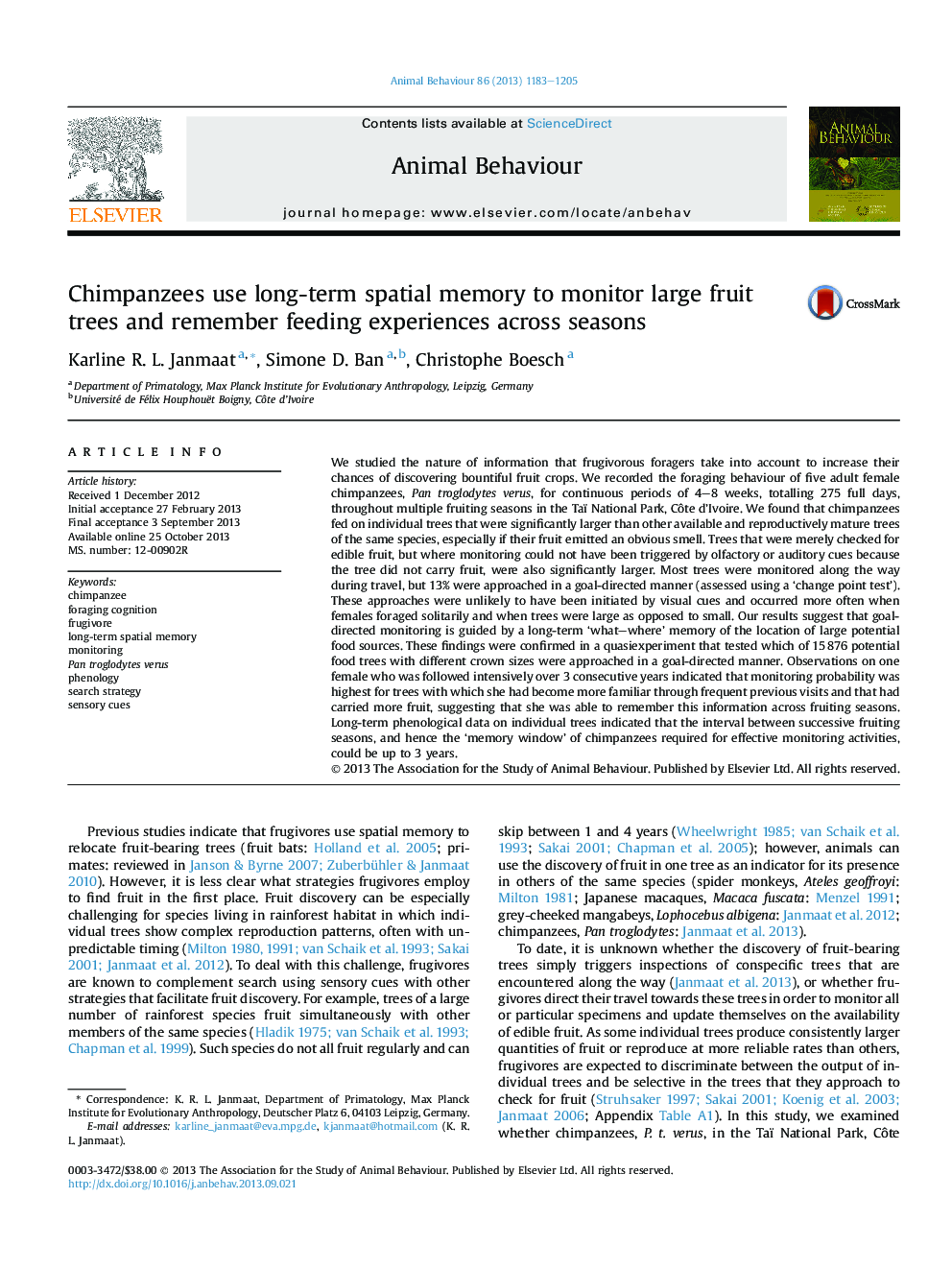| Article ID | Journal | Published Year | Pages | File Type |
|---|---|---|---|---|
| 10970634 | Animal Behaviour | 2013 | 23 Pages |
Abstract
We studied the nature of information that frugivorous foragers take into account to increase their chances of discovering bountiful fruit crops. We recorded the foraging behaviour of five adult female chimpanzees, Pan troglodytes verus, for continuous periods of 4-8 weeks, totalling 275 full days, throughout multiple fruiting seasons in the Taï National Park, Côte d'Ivoire. We found that chimpanzees fed on individual trees that were significantly larger than other available and reproductively mature trees of the same species, especially if their fruit emitted an obvious smell. Trees that were merely checked for edible fruit, but where monitoring could not have been triggered by olfactory or auditory cues because the tree did not carry fruit, were also significantly larger. Most trees were monitored along the way during travel, but 13% were approached in a goal-directed manner (assessed using a 'change point test'). These approaches were unlikely to have been initiated by visual cues and occurred more often when females foraged solitarily and when trees were large as opposed to small. Our results suggest that goal-directed monitoring is guided by a long-term 'what-where' memory of the location of large potential food sources. These findings were confirmed in a quasiexperiment that tested which of 15â876 potential food trees with different crown sizes were approached in a goal-directed manner. Observations on one female who was followed intensively over 3 consecutive years indicated that monitoring probability was highest for trees with which she had become more familiar through frequent previous visits and that had carried more fruit, suggesting that she was able to remember this information across fruiting seasons. Long-term phenological data on individual trees indicated that the interval between successive fruiting seasons, and hence the 'memory window' of chimpanzees required for effective monitoring activities, could be up to 3 years.
Related Topics
Life Sciences
Agricultural and Biological Sciences
Animal Science and Zoology
Authors
Karline R.L. Janmaat, Simone D. Ban, Christophe Boesch,
